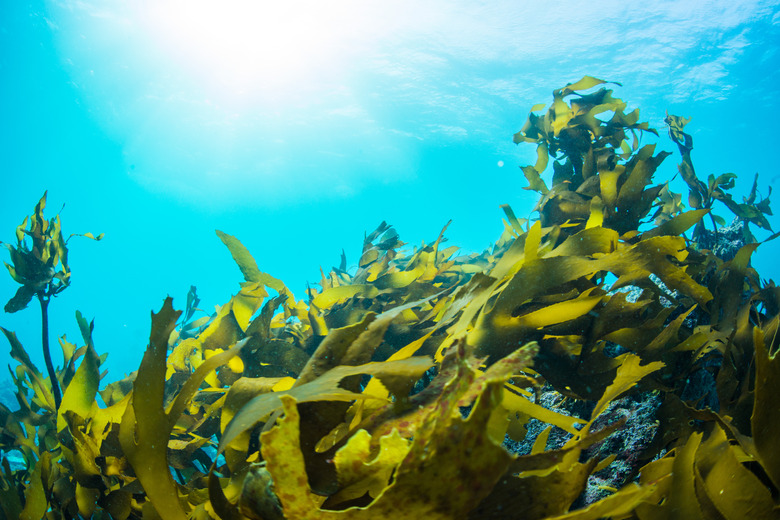Factors Affecting Primary Productivity
Primary production is responsible for most of the life on Earth. This is the process by which plants convert the carbon dioxide that they have absorbed from the atmosphere and ocean into various other chemical substances. These chemical substances then provide the structure from which an ecosystem can emerge as animals of various kinds consume plant nutrients and develop a food chain. The factors affecting primary productivity are as complex as natural ecosystems are.
Vascular Plants
Vascular Plants
Vascular plants are overwhelmingly responsible for most of the primary production on land. These plants take in water through their root systems, which they then use to distribute nutrients from the soil throughout their system. Through the process of photosynthesis, these plants use sunlight to convert these nutrients into complex substances such as sugars and proteins. This basic process creates the chemical substances necessary for most of the complex terrestrial life on Earth.
Algae
Algae
Unlike on land, the majority of primary production in the ocean is p,erformed by algae, which are simple organisms of differing kinds. Occasionally single algae combine together to form more complex structures as in seaweed. Other times they remain free-floating. These organisms create chemical substances in much the same way as vascular plants through photosynthesis. Because they are already submerged in water, they require no system of circulation.
Light
Light
Energy from the sun is essential to the process of photosynthesis, by which most primary production gets done. This has a large effect in the oceans, where, because of the limits of light penetration, it is necessary for most production to take place near the surface. This area near the ocean's surface is called the photic zone. Beneath the photic zone is what is known as the mixed zone, where some production takes place.
Water
Water
Water is also essential for photosynthesis. Obviously, lack of water is never a factor in oceanic primary production, but plays a great role in terrestrial production. Lack of water is the main limit on primary production on the Earth's surface. It has been found that in any area where there is an adequate water supply there will be a large amount of primary production. Water is primarily supplied through rain and the Earth's weather system.
References
- Costal Carolina University: Primary Productivity; Sharon Gilman; 1999
- University of Michigan: The Flow of Energy- Primary Production to Higher Trophic Levels; October 31, 2008
- Pearson Education: Primary Productivity; 2002
- Oak Ridge National Laboratory: Net Primary Productivity Methods
- Environmental Literacy Council: Primary Productivity, Grass — Student; Angela Morrow; 2002
- Maryland Department of Natural Resources: Net Primary Productivity
Cite This Article
MLA
Reader, Casey. "Factors Affecting Primary Productivity" sciencing.com, https://www.sciencing.com/factors-affecting-primary-productivity-13659267/. 22 January 2019.
APA
Reader, Casey. (2019, January 22). Factors Affecting Primary Productivity. sciencing.com. Retrieved from https://www.sciencing.com/factors-affecting-primary-productivity-13659267/
Chicago
Reader, Casey. Factors Affecting Primary Productivity last modified March 24, 2022. https://www.sciencing.com/factors-affecting-primary-productivity-13659267/
